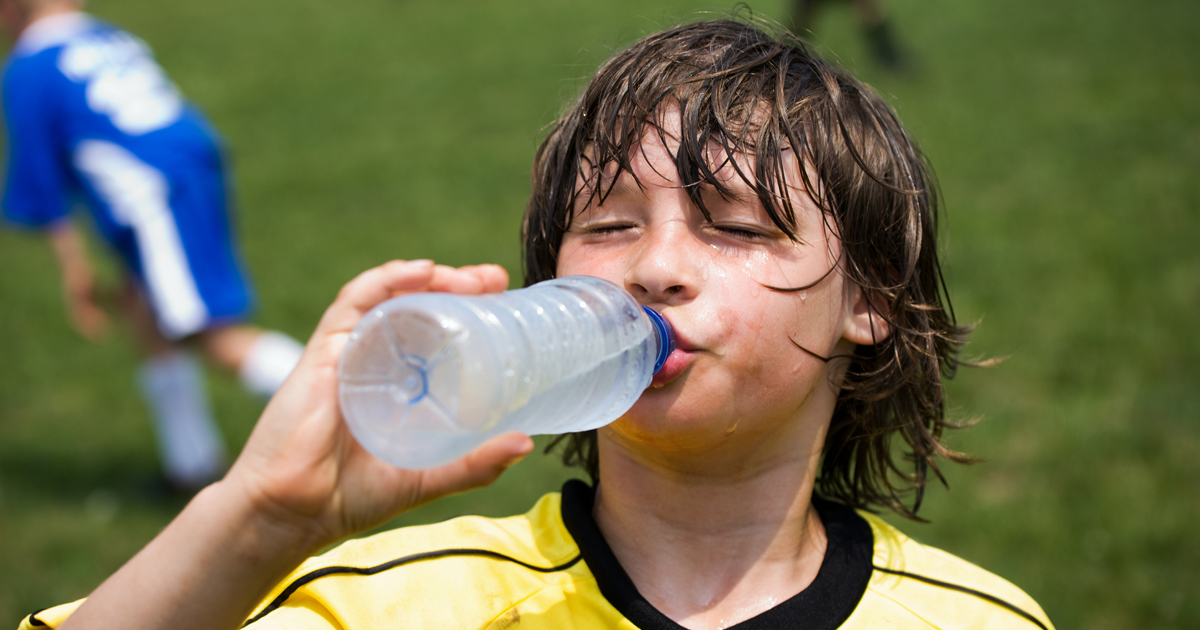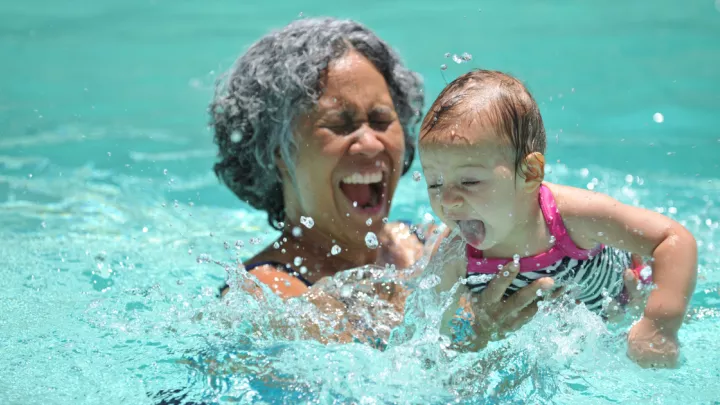Heat exhaustion and heat stroke in children: Symptoms and prevention

The sweltering summer heat is upon us. We often think of the basics for our kids, like sunscreen and a water bottle. But when the temperatures rise, knowing how to spot the signs of heat exhaustion and heat stroke is critical to their health and safety.
Heat exhaustion and heat stroke exist on a spectrum of heat-related illnesses, ranging from mild and treatable at home to an extreme emergency. Both share related symptoms, but there are some differences.
"Symptoms in children may be more difficult to identify as they can't always tell us what they are feeling, says Amber Brown Keebler, MD, Nebraska Medicine pediatrician. "Risk of heat exhaustion and heat stroke is increased with prolonged exercise, particularly in hot environments and prolonged exposure to hot and humid temperatures. If the signs and symptoms are identified, it is important to cool down their body temperature immediately."
Causes of heat-related illness:
- Prolonged exercise, hard work, or sports activity in hot and humid environments
- Prolonged exposure to hot and humid temperatures inside
- Not staying hydrated. Dehydration causes sweat loss that exceeds fluid intake
- Sudden change in outside temperatures without time to acclimate (which can take eight to 10 days)
Symptoms of heat exhaustion
Symptoms of heat exhaustion are essential to recognize as they can lead to a more dangerous, life-threatening form of heat illness called heat stroke. Seek medical attention if symptoms are severe or do not improve with intervention within 30 minutes.
Symptoms to watch for include:
- Pale skin or cool skin despite the heat
- Increased sweating or thirst
- Nausea or vomiting
- Goosebumps
- Dizziness or weakness
- Mild fever for a short period or no fever
- Muscle cramps
- Headache
- Irritability
What to do:
- Bring kids to a cooler space: an air-conditioned room or a shaded area
- Encourage them to drink cool fluids with salts, such as a sports drink or hydration beverage, at regular intervals
- Remove outer clothing, apply cold cloths to the skin or place them in a cool bath or shower
- Have them lie down and elevate the feet
Symptoms of heat stroke
Heat stroke (or sunstroke) is a life-threatening emergency that occurs when the body creates more heat than it can release. Heat stroke must be treated immediately. The signs of heat stroke may look similar to heat exhaustion but with a few differentiations:
- Hot, dry, red skin or gray, cool skin
- High fever (over 105 degrees)
- Fainting or unresponsive
- Nausea, vomiting, diarrhea
- Extreme weakness or inability to walk or can't walk without support
- Many children with heatstroke do not sweat
- Confusion, disorientation, seizures
- Rapid heartbeat, rapid breathing or shortness of breath
- Severe headache
What to do:
If you suspect your child has heat stroke, call 911 or go to the emergency room immediately.
Heat exhaustion and heat stroke prevention tips
Heat illnesses are nothing to ignore or push through. Babies, children, and older adults are at the most significant risk. Heat exhaustion and heat stroke are preventable with the proper safety actions:
- Keep kids hydrated with large amounts of cool water, take water breaks every 15 to 20 minutes, and encourage them to keep drinking even if they don't feel thirsty
- If playing sports or being physically active outside, drink sports or hydration beverages
- Dress cool with lightweight, moisture-wicking clothing and change it if it becomes wet with sweat
- When high heat and humidity occur, take frequent breaks in air conditioning or at least in the shade
- Avoid playing sports during peak sun hours if possible
- Pay attention to how kids are acting and watch for symptoms
Find a primary care doctor for your family online or call 800.922.0000.






